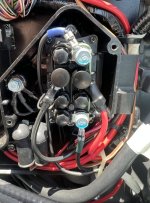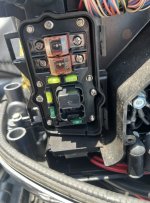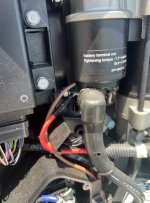colbysmith
Active member
- Joined
- Oct 2, 2011
- Messages
- 5,036
- Reaction score
- 14
- C Dory Year
- 2009
- C Dory Model
- 25 Cruiser
- Hull Identification Number
- UWH25301J809
- Vessel Name
- C-Traveler
C-Travelers outboard was set up with charging to the start battery, through a 50A CB, from a point on the Yamaha 150 that looks like an electronic module with several wires running into it. I’m concerned this may be overcharging the battery as the Victron BMV714 is showing a voltage of 15.6 at higher RPMs and around 14.3 or so at idle. I can average this voltage down by placing the battery switch in both or Batt 2, thus paralleling with the regular battery charging…off the alternator?. For this reason I’ve routinely switched to both after starting. However sometimes I would like to just switch to Batt 1. Does anyone know what that electronic module is for and if it should be hooked up this way to the battery? I’m wondering if it has something to do with spark control…. I believe this was done by a shop the previous owner used. Colby





